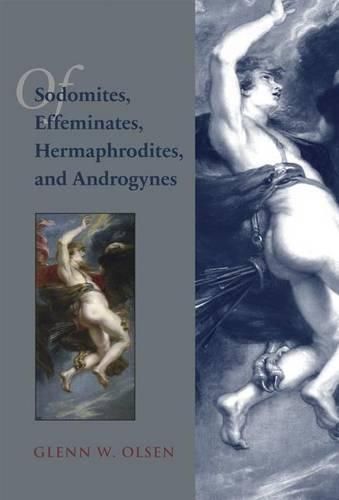Readings Newsletter
Become a Readings Member to make your shopping experience even easier.
Sign in or sign up for free!
You’re not far away from qualifying for FREE standard shipping within Australia
You’ve qualified for FREE standard shipping within Australia
The cart is loading…






This book examines the history of sex and gender from a linguistic, artistic, and philosophical perspective, providing a new paradigm with which to analyze this controversial subject. Glenn Olsen’s wide-ranging scholarship and his attention to primary sources and contemporary interpretations are enhanced by the inclusion of numerous illustrations of Romanesque sculpture. Part one takes the reader on a journey from the ancient world through the early middle ages, examining literature, art, and sculpture in order to capture the ‘sexual imagination’ of the period. Olsen emphasizes that all centuries had a varied language of sex, focusing on the means by which ‘sex’ was put into words, especially in penitentials and canon law. He shows there was no single understanding of gender and power relationships, arguing that the story of gender should encompass more than the history of power. Part two turns to Peter Damian, especially his Epistle 31, the so-called Book of Gomorrah. Olsen explores the themes of nature, sin, demonic incitement, lust, free will, and effeminacy, as well as the question of whether Damian represented the onset of the ‘persecuting society.
$9.00 standard shipping within Australia
FREE standard shipping within Australia for orders over $100.00
Express & International shipping calculated at checkout
This book examines the history of sex and gender from a linguistic, artistic, and philosophical perspective, providing a new paradigm with which to analyze this controversial subject. Glenn Olsen’s wide-ranging scholarship and his attention to primary sources and contemporary interpretations are enhanced by the inclusion of numerous illustrations of Romanesque sculpture. Part one takes the reader on a journey from the ancient world through the early middle ages, examining literature, art, and sculpture in order to capture the ‘sexual imagination’ of the period. Olsen emphasizes that all centuries had a varied language of sex, focusing on the means by which ‘sex’ was put into words, especially in penitentials and canon law. He shows there was no single understanding of gender and power relationships, arguing that the story of gender should encompass more than the history of power. Part two turns to Peter Damian, especially his Epistle 31, the so-called Book of Gomorrah. Olsen explores the themes of nature, sin, demonic incitement, lust, free will, and effeminacy, as well as the question of whether Damian represented the onset of the ‘persecuting society.